Thai (often referred to as Siamese) is the official and national language of Thailand. As the native language of Thai and Thai Chinese peoples, Thai is a tonal language with 5 varying tones.
Learning Thai will not only give you deeper access to Thailand’s intriguing culture and local life, but will allow you to confidently grab opportunities that come your way.
Like any language, the process of learning Thai can be fairly long, but very doable. This pocket guide will show you some beginner basics to know about the language, how you can accelerate your learning, and some easy phrases that will come in handy if you are planning on travelling to the Land of Smiles.
Basic Thai sentence structure
As you progress with learning Thai, you’ll start to find that the way words are ordered in a sentence is an important factor that greatly impacts the grammar of the language. Without knowing proper Thai sentence structure, you might end up sounding weird when you try to speak Thai, and you won’t be easy to understand either.
To make sure that doesn’t happen, let’s have a look at basic Thai sentence structure, and how it affects the written and spoken language.
As with English, the most basic Thai sentence structure consists of SVO: Subject, Verb, and Object.
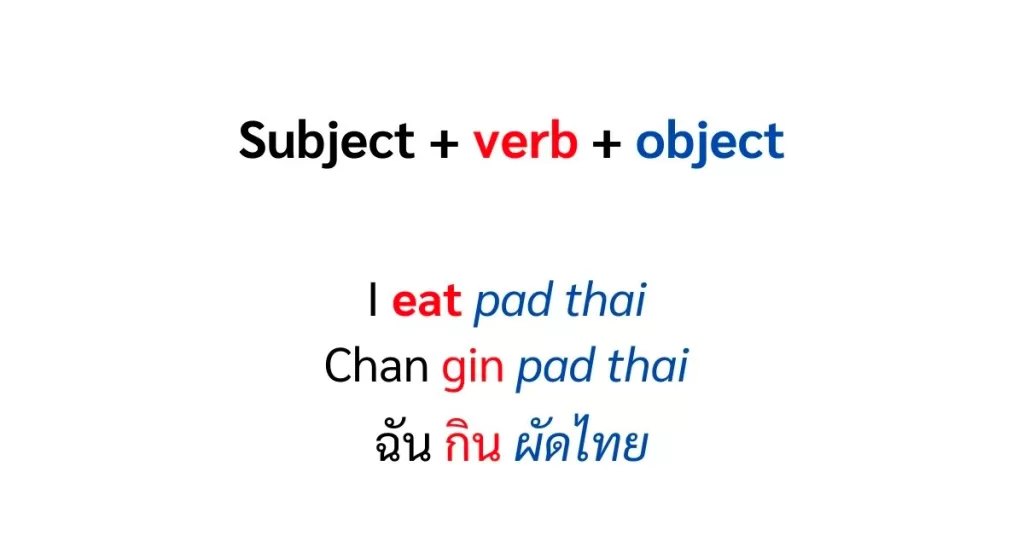
As you can see, Thai generally follows the same sentence structure as English. The subject (the person or thing that the sentence is about) of the sentence is followed by the verb or action, and finally, the object (what the subject is acting upon).
Needless to say, there are more than a few situations where Thai sentence structure has to deviate from this basic format.
Adjectives in the Thai language
Adjectives are a core used element in any language. Words like big, small, or strong help to describe or modify other words. The question to ask is, where do adjectives go?
It’s simple. Adjectives are placed behind the noun that they are describing or modifying. For example:
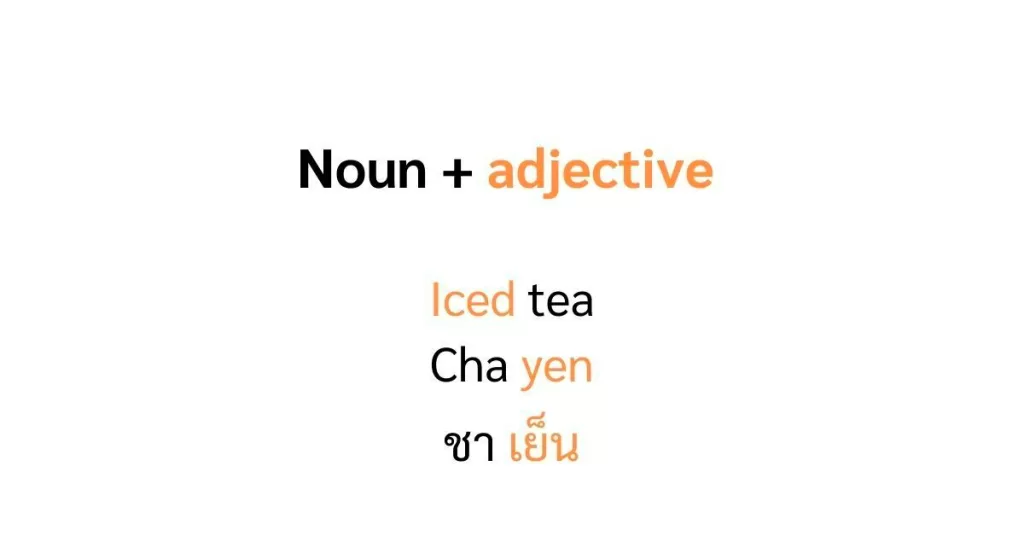
The adjective ‘yen’ (เย็น), is placed after the noun ‘cha’ (ชา). If you’re craving for some tea, you would say: “I would like to order iced tea” / “Chan yark sang cha yen”.
Adding adjectives to Thai sentences might seem counterintuitive to English speakers, but with practice, you’ll quickly get the hang of it.
Negative sentences in Thai
We make negative sentences by using words like ‘not’ or ‘no’. In Thai, there is one magical word that can turn almost any sentence or statement negative – ‘mai’ (ไม่). Here is an example of how you would fit ‘mai’ in a Thai sentence:
- “Mai bpen rai” – It’s nothing, never mind
- “Sanuk hmai?” – Are you having fun?
- “Mai sanuk” – I’m not having fun.
- “Chan mai gin pad thai” – I don’t eat pad thai
- “Khun pood pasa anggrid dai hmai?” – Do you speak English?
Particles in Thai
Particles are used in Thai as a way to convey emotion, mood, and different levels of formality and politeness.
Two popular polite particles in Thai are ‘khrap’ (ครับ) and ‘ka’ (ค่ะ). However, there are many more particles you’ll learn along the way. Here are a few ways to use particles:
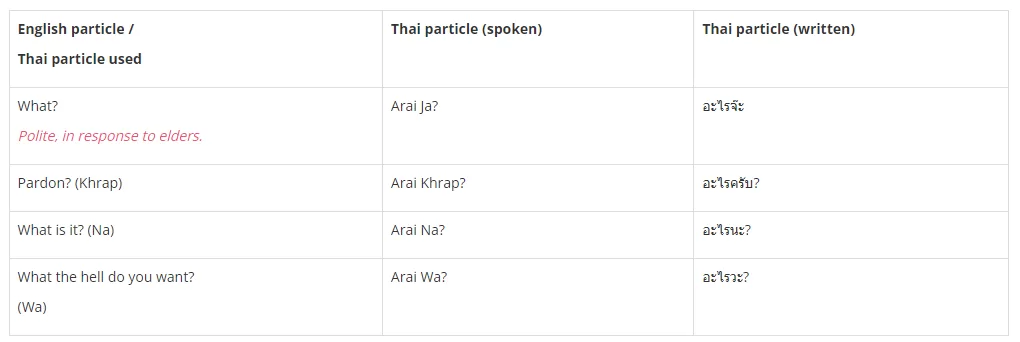
The important thing to remember is that Thai articles always come at the end of the sentence, even after question words and tense words.
That’s just a quick starter. There’s still tenses, question words, prepositions and more – like the difference between “I will eat” / “Chan ja gin (ฉันจะกิน)” and “I already ate” / “Chan gin leaow (ฉันกินแล้ว)”.
A Thai language course will likely be the best way to gain mastery.
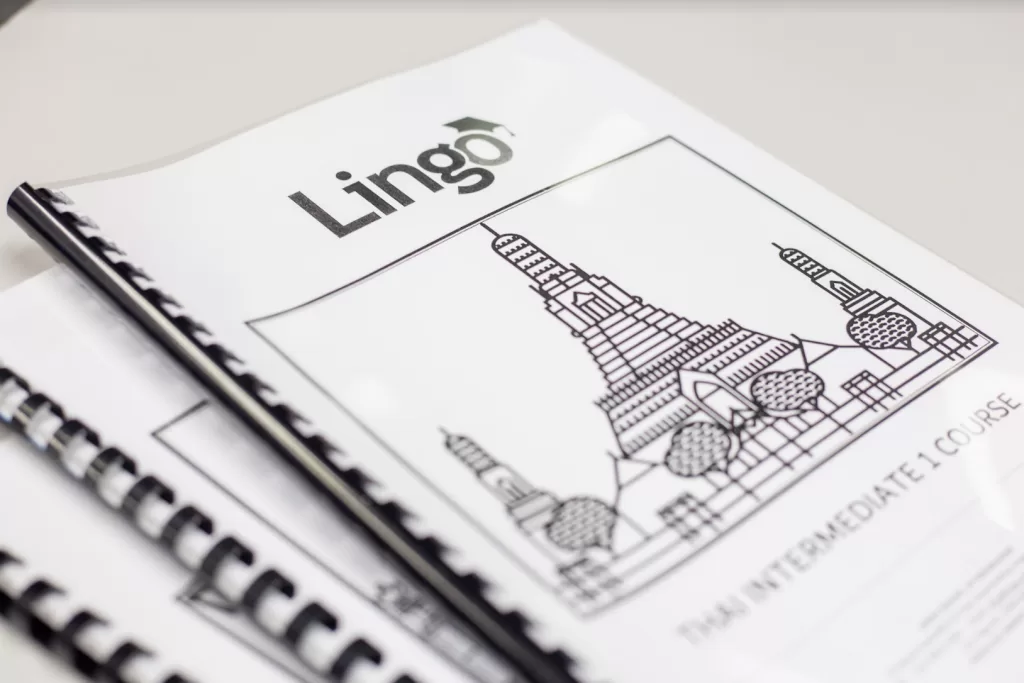
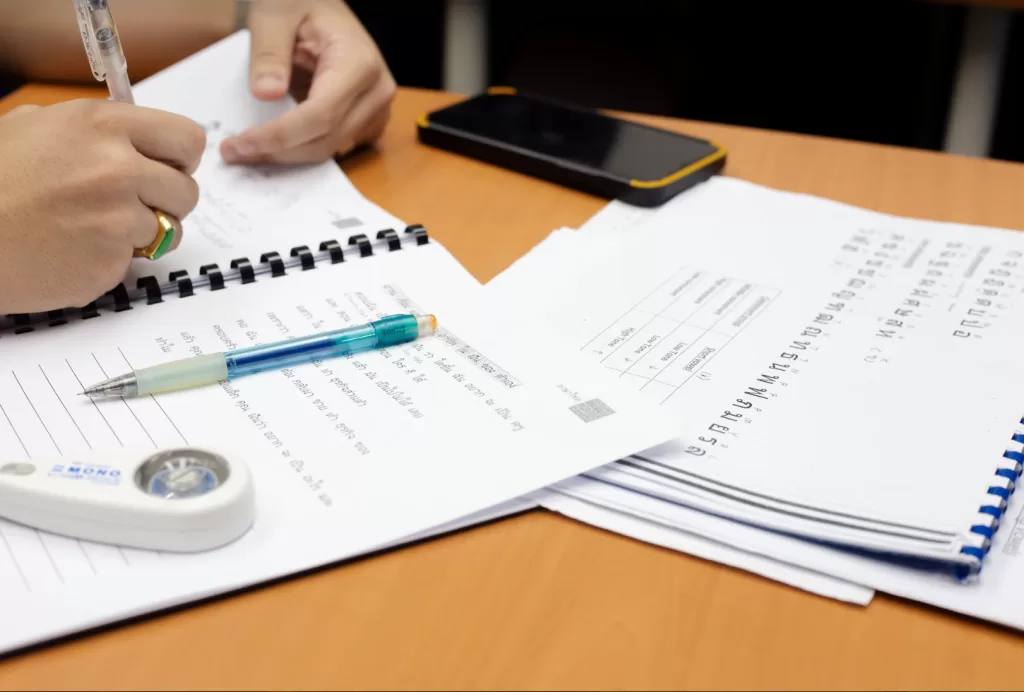
How can I learn Thai?
Learning Thai boils down to two things:
- How often you learn
- How quick of a learner you are
Thankfully, there is a variety of ways you can choose to easily learn the language. But no matter which method you choose, you won’t be able to escape the time and dedication needed for you to speak, write, and read Thai properly.
Usually, a three-month course will be able to provide you with the basics of the language. And within a year, you can expect to have the language proficiency of a first-grade Thai student.
And hey, your tones do not have to be perfect for a listener to understand what you’re saying. You’ll keep getting better as you go.
So, what are some of the best ways to learn Thai?
- Learn Thai online
An online tutor can dedicate all of their time to helping you improve your Thai, point out problems, and quickly teach you the topics you need most help with. In addition, you can learn the language while sitting in your pants at home.
- Enrol in a Thai language course
The Thai Competency Test (TCT), the only official Thai language certificate for foreigners, is arranged by the Ministry of Education of Thailand. For those who are applying to universities, searching for work, or looking to run a business, enrol in a Thai language course that can help you with your TCT.
- Other great ways to learn Thai:
- Learn Thai with apps: Endless options are available at your fingertips.
- Learn from Thai friends: Learn the lingo and slang that locals use.
- Devour Thai books and movies: As a supplement to lessons.
- Keep a diary in Thai: Make it personal, make it stick.
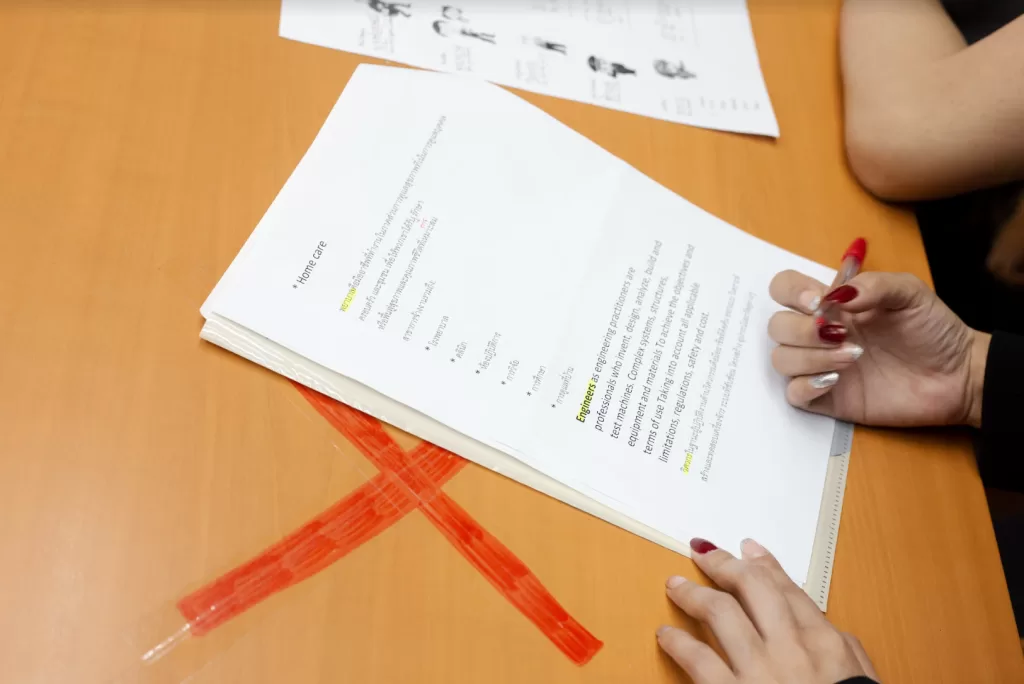
Basic Thai phrases to know when travelling
Heading to Thailand soon? We’ve compiled a list of 20 phrases that will help you on your trip. Yin Dee! You’re welcome!
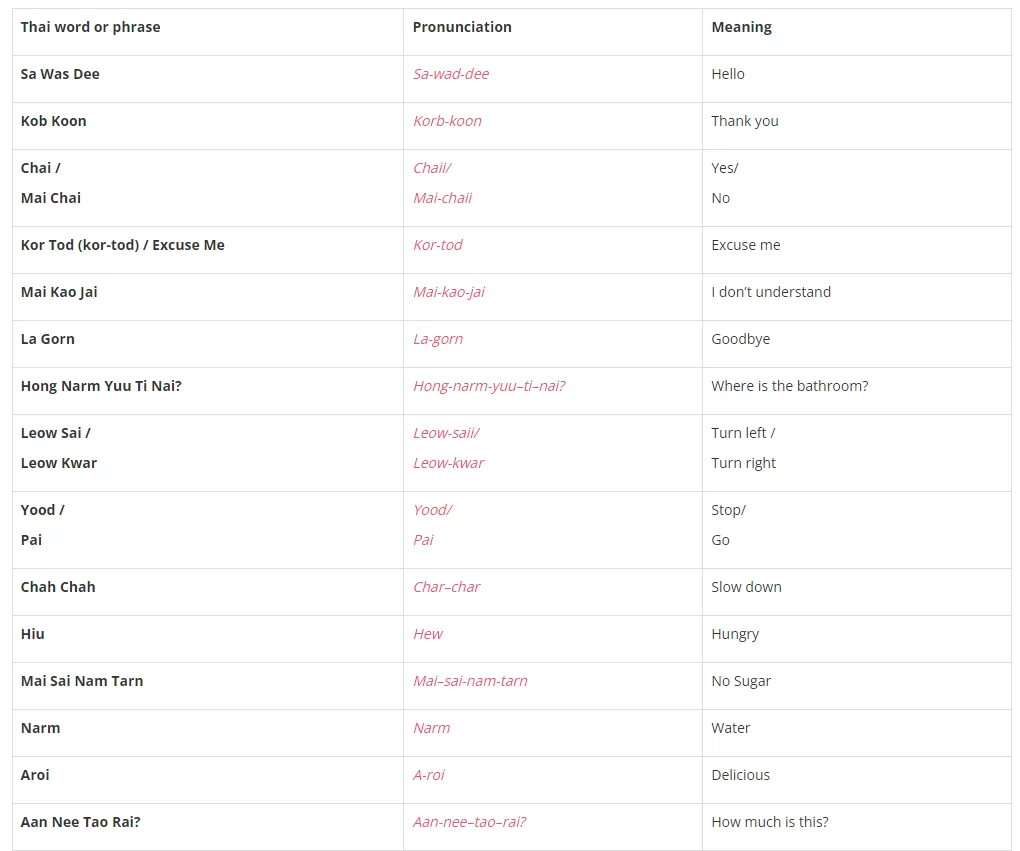
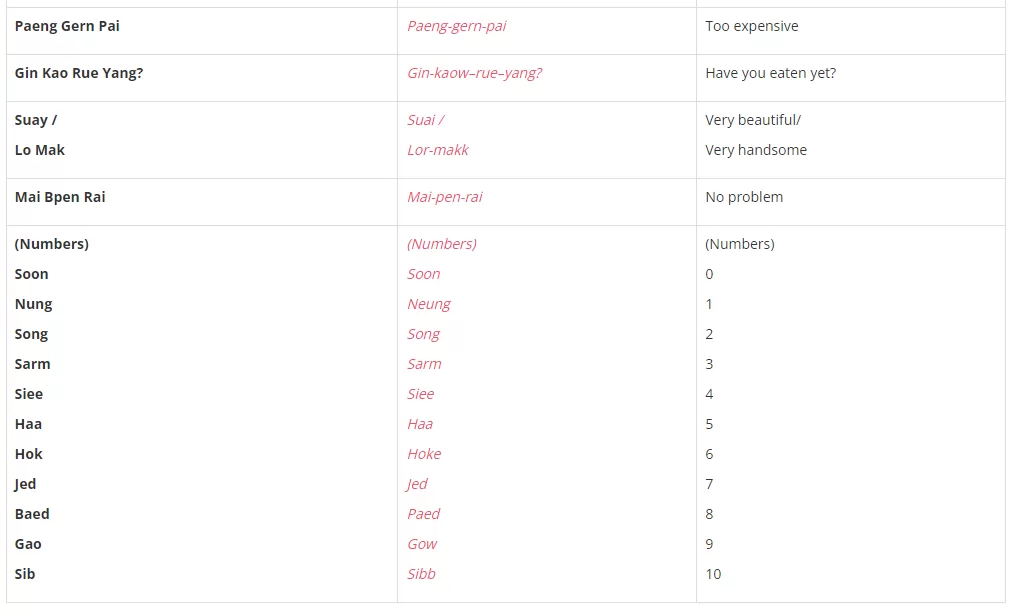
Today, more and more of the world is becoming either bilingual or multilingual[1]. In addition to helping build cross-cultural ties, the anti-monolingual trend also benefits the cognitive abilities of learners, not just in adulthood, but in older age[2] as well.
Interested in learning Thai as part of a group or via individual online lessons? At Lingo School, we love making learning enjoyable. Contact us today to start your Thai learning journey.
Sanuk mai? We know you will.
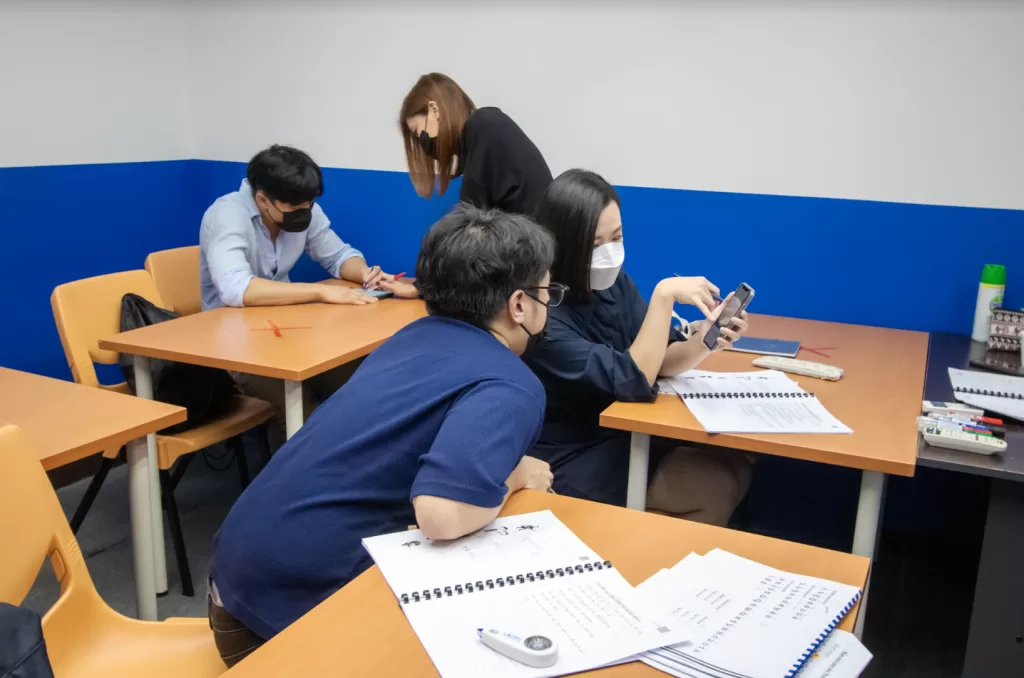
References:
- Marian, V., & Shook, A. (2012). The Cognitive Benefits of Being Bilingual. Cerebrum: The Dana Forum on Brain Science, 2012, 13. https://www.ncbi.nlm.nih.gov/pmc/articles/PMC3583091/#b9-cer-13-12
- Bialystok, E., Craik, F. I. M., & Luk, G. (2012). Bilingualism: consequences for mind and brain. Trends in Cognitive Sciences, 16(4), 240–250. https://doi.org/10.1016/j.tics.2012.03.001

